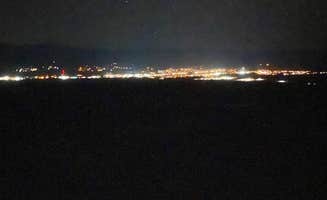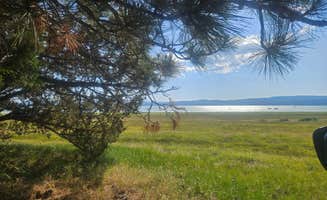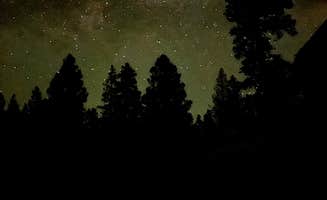Primitive camping near Janesville, California offers opportunities for self-sufficient outdoor recreation in high desert terrain ranging from 4,000 to 5,500 feet elevation. The region features juniper-sage ecosystems and volcanic landforms typical of the northeastern California landscape. Several Bureau of Land Management (BLM) areas provide no-fee dispersed camping with varying levels of development and amenities.
What to do
Wildlife viewing opportunities: The Fort Sage area provides habitat for wild horses. As one camper at Fort Sage Off Highway Vehicle Area noted, "Went on all the trails and out in the sand dune area we came upon wild horses, this was quite a site to see. They were just running and being playful."
Off-highway vehicle trails: The Fort Sage region contains numerous established trails for ATVs and side-by-sides. "Trail riding galore. Went on all the trails and out in the sand dune area," reports a Fort Sage visitor. The area's designated status for OHV use means trails are maintained and suitable for various skill levels.
Stargazing sessions: Minimal light pollution creates exceptional night sky viewing. One camper at Antelope Mountain Dispersed Camp mentioned it was "not a bad place to spend a night or two primitive camping," with another Fort Sage visitor highlighting "staring into a gorgeous night sky" as a memorable experience.
Fishing access: Eagle Lake provides fishing opportunities for visitors willing to travel north of Janesville. "Maybe wet a worm?" suggests one camper who stayed at East Eagle Lake, noting the accessible shoreline.
What campers like
Solitude and space: Many dispersed sites offer significant privacy. "We were the only people in our camp area for the entire stay," reports one Fort Sage visitor. Another mentioned, "Pretty secluded and usually one can find solitude."
Well-maintained facilities: Despite their dispersed designation, some sites feature surprising amenities. A visitor to East Eagle Lake found it "pretty great. Loved it when in a pinch," while Fort Sage consistently receives praise for its facilities: "Nice cement picnic tables and sturdy grills/pits for fire."
Natural aromatics: The native vegetation creates distinctive scents. As one Fort Sage camper noted, "Quiet and smells like juniper and sage."
Accessibility from highways: Many sites require minimal travel on unpaved roads. At Rocky Point Dispersed Camping, a camper appreciated the "good distance away from roads and houses. Lake view." Fort Sage visitors also note "great access from highway" as a positive feature.
What you should know
Road conditions vary significantly: Prepare for unpaved access roads to most sites. "The gravel road in was as smooth as the hwy," reports one Fort Sage visitor, while another noted "the dirt road on the way to the campsite is pretty washboarded."
Cell service is limited but present: Coverage depends on your carrier and specific location. At Fort Sage, campers report: "Good service for T-Mobile" and "I have AT&T and have 1 bar, but excellent starlink."
Facilities vary between sites: Some areas offer developed amenities while others are completely primitive. At CA-139 Pull Off Area, a camper explains: "No bathrooms, trash or water... Definitely just a place to rest or gather yourself for a couple of days."
Wildlife encounters are common: Expect to hear coyotes and possibly encounter other animals. "You can even hear the coyotes calling to one another at night," reports one Fort Sage camper.
Tips for camping with families
Select sites with established facilities: Some dispersed areas offer basic amenities that make family camping easier. Fort Sage provides "picnic tables, fire pits, and grills. Out house at current camp spot. Very clean and quiet."
Consider site spacing and safety: Look for areas with defined boundaries and safe play spaces. At Antelope Mountain, a camper found "one good area... It had level sites and nice tall trees. It also tucked in out of the wind."
Plan for temperature extremes: The high desert environment means significant day-to-night temperature changes. "I would avoid this place in the summer, hot and with no power it would be a sweat box," warns a Fort Sage visitor.
Seek shaded sites when possible: Limited tree cover makes shade valuable. At Willard Creek Dispersed, campers can find sites with more vegetation than the open sage flats common to other areas.
Tips from RVers
Check road conditions before arrival: Many dispersed sites require travel on unmaintained roads. Regarding Antelope Mountain, one camper reported sites with "rough road to reach them, and not level so we moved on."
Space availability varies seasonally: Some areas accommodate larger rigs but may have limited suitable parking. "Feel safe and can easily get a big rig in here," notes a Fort Sage visitor about their experience.
Consider leveling requirements: Many sites feature uneven terrain. Rocky Point Dispersed Camping was described as a "large barren area with a toilet near the lake. Not great for a tent but can make it work."
Water access planning is critical: No potable water exists at most sites. Bring all necessary supplies as one CA-139 Pull Off Area camper emphasizes: "No bathrooms, trash or water."





